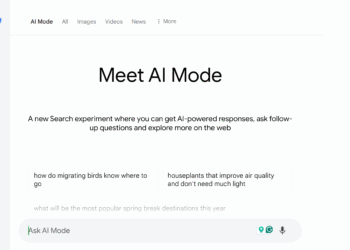After testing numerous AI tools, I didn’t hold high hopes for Grok. However, a week of using it completely altered my views. Unlike many of the hyped-up chatbots out there, Grok excels with its combination of efficiency, quick responses, and a distinct personality that is often missing in AI.
### Stay Updated with Real-Time X Integration
Many AI tools feel quite stagnant. They excel at background research but lag behind when it comes to current events. Grok changes this narrative with its direct integration with X (formerly Twitter), making it one of the few platforms that can capture live discussions and emerging trends as they happen.
Instead of relying solely on conventional sources, Grok brings to light firsthand accounts, official announcements, expert opinions, and public sentiment in real time. This isn’t just about understanding what’s going on—it’s about feeling the rhythm of the moment through the voices of those actively engaging with a topic.
This immediacy is a rarity in the AI landscape. Using Grok feels more like conversing with someone who’s already engaged in the global dialogue rather than interacting with a detached machine. And it doesn’t stop at the news; from sports to politics to pop culture, anything trending is accessible while it’s still relevant.
Nonetheless, real-time updates can introduce unpredictability. Information travels quickly, and not everything is accurate. Grok doesn’t filter out the chaos; instead, it captures the frenetic energy of the moment. However, if you can sift through that, it offers something other AI models often miss: real-time relevance.
### Aurora: Creative Image Generation Without Limits
We’ve all encountered creative restrictions when using text-to-image tools. Enter a request about a public figure or a famous character, and you might encounter vague errors or mediocre results. That’s where Grok’s Aurora model shines, providing an expansive creative latitude for your ideas.
During my testing, I experimented with some outlandish concepts just to see how far it could stretch. One prompt depicted Michael Jordan in a tuxedo playing basketball on the moon. Another featured a T. rex baking cupcakes in a chef’s apron. I even challenged it with a race between a sleek sports car and a cheetah. Each time, Aurora produced results that were visually striking, whether photorealistic or closely aligned with my creative vision.
This level of flexibility is not merely for amusement; it has significant applications for creative projects, such as storyboarding, design prototypes, marketing strategies, and social media content generation. If you’re involved in visual storytelling or branding, this speed and adaptability can significantly reduce your production time.
While Grok maintains some basic content boundaries to keep outputs relevant and useful, it avoids heavy-handed filters that disrupt your creative flow. The outcome is a more fluid and intuitive creative process—a tool that empowers rather than restricts.
### Effortless Image Editing That Impresses
While many AI platforms excel at generating images from scratch, editing pre-existing visuals can often be a struggle. Most tools either disappoint or provide hilariously inaccurate results. However, Grok’s Aurora model offers a more interactive, hands-on approach, allowing you to upload images and suggest modifications through simple dialogue.
I tested this by uploading a scenic photo from a ski lift that showcased a mountain view. I asked Grok to turn the mountain into a volcano and create a dark, ominous ambiance. The result was truly impressive: the mountain morphed into a smoldering volcano, the lighting transformed into a dramatic tone, and eerie clouds filled the sky, resembling a cinematic masterpiece.
No advanced editing skills are needed. Aurora simplifies visual experimentation, transforming a typically complex task into a straightforward conversation. For those needing quick mockups, social media content, or conceptual visuals, the ease and speed it offers are remarkable.
Of course, there are limitations. The output may not always achieve pixel-perfect precision or professional-quality retouching. Sometimes, results can be inaccurate or even absurd; however, that’s part of the iterative process. A few tweaks to your prompts usually set things back on course.
### DeepSearch vs. DeeperSearch: A New Approach
Most AI tools include a search feature, but the conventional method often remains unchanged: aggregate a few top links from Google, summarize content, and move on. Grok’s DeepSearch, especially its enhanced version, DeeperSearch, adopts a more profound approach. Instead of merely retrieving answers, it delves deeply into them.
DeepSearch goes beyond surface-level information, presenting more relevant insights. However, Grok truly distinguishes itself with DeeperSearch. It doesn’t just collect data; it analyzes it, identifies connections, and constructs a more nuanced understanding of a topic. It encourages exploration of the broader context rather than just the obvious points.
The real innovation with DeeperSearch lies in its persistence. It refines its conclusions, poses follow-up questions, and uncovers insights that may not be immediately apparent. By scouring the internet for facts, it develops a comprehensive perspective. This capability sets it apart from most AI tools.
If you’re seeking more than a brief summary, DeeperSearch provides that extra layer of depth, aiding your genuine comprehension of the material.
### Think Mode: Clarity in Complex Reasoning
A significant challenge with AI is that it often presents conclusions without revealing the thought process behind them, leaving you uncertain about the validity of the answer. Think Mode addresses this by offering a structured breakdown of its reasoning.
Instead of jumping straight to a response, Grok starts by fully grasping the question, identifying key terms, and understanding the broader context. It dissects the issue into manageable parts, analyzes relevant information, and constructs its answer step by step. Each phase—comprehension, analysis, organization, and review—is made transparent, allowing you to see how the response evolves.
This clarity fosters trust in the process. You’re not just handed a conclusion; you witness the logic unfolding live. That’s what makes Think Mode especially useful for tackling complex topics, making decisions, solving technical challenges, or brainstorming ideas. By exposing the reasoning, Think Mode enriches your engagement with the material.
### Fun Mode: A Witty Twist on AI Interaction
Many AI tools aim for neutrality, steering clear of personality to focus on precise responses. Grok’s Fun Mode takes a different route, incorporating character into its interaction without sacrificing clarity or depth.
With Fun Mode activated, Grok becomes much more engaging, mixing humor with insightful commentary. It injects a witty edge into its answers, transforming the interaction from robotic to more akin to conversing with an informed friend. Even with the added humor, the quality of responses remains intact, delivering clear and structured answers, albeit with a touch more personality.
While Fun Mode may not suit every context, it excels when you want to make a topic more relatable or enjoy a light, entertaining exchange. It’s an excellent way to keep the conversation enjoyable while still providing valuable insights.
In conclusion, Grok transcends the conventional AI experience by blending creativity, efficiency, and real-time relevance in a remarkably human-like manner. It’s not merely a tool; it’s a collaborative partner for brainstorming, research, and entertainment. Although it has its imperfections, Grok’s unique fusion of personality and practicality makes it a true standout. If you seek more than just a friendly search engine, Grok is the AI that rises to the occasion.






